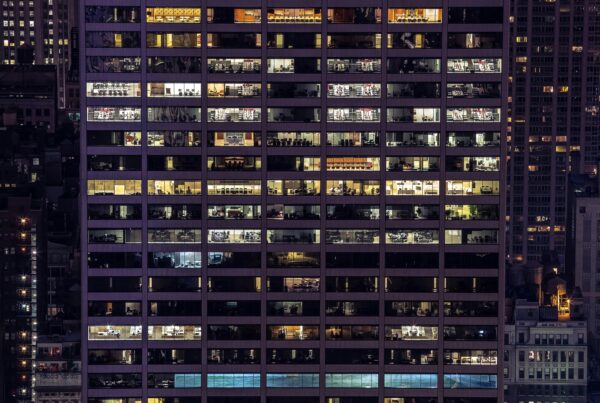We’ve always thought the only complexities of coffee was in its preparation. The finest coffee beans had to be chosen, freshly ground, only the purest water, the right temperature and pressure, etc. There were certain requirements to be carefully met if one is to achieve that perfect elusive crema. There was an art to it.

Coffee has ceased to be a mere beverage for jumpstarting mornings; For some it’s a way of life.
(Image from Escapeintolife.com)
It turns out the coffee industry itself is just as intricate and significant—maybe even more so because of the many lives at stake. Who could have known that that simple transaction of buying a cup of mocha latte at Starbucks actually has ripple effects to the life of the humble impoverished coffee farmer somewhere in Kenya?
A cup of fair trade coffee, please.
We’ve always heard of the fairtrade label, but never did dig enough to find out what it truly meant.
To put it rather simply, fairtrade is a mechanism that ensures coffee farmers get the price they deserve for their crops. Think of it this way: for all their honest and hard work, coffee farmers (and most farmers in general) never really get out of poverty. Meanwhile, it’s the big chain stores that rack up the dollars. The high price we pay for our beloved cups of javas goes to these stores while only a tiny percentage of it trickles down to the farmers who labored over their crops.
Fair trade seeks to even out these imbalances by providing a safety net in the form of a floor price (or Fairtrade Minimum Price), currently set at USD 1.40 per pound. So even when coffee’s market price becomes too low, farmers are assured they still get a decent price for their efforts.
That’s why big chain stores like Starbucks have increased their offerings of fair trade coffee back in 2009, while Walmart has been selling reasonably-priced trade-fair coffee since 2006.
But more than just pricing, fair trade also seeks to empower farmers. Cooperatives organize small farms, give farmers bargaining power, and make transactions more transparent. At the same time, farmers are encouraged to switch to sustainable farming practices, such as conservation of forests, under-shade farming, use of organic fertilizers, etc. Perhaps more important are the ways in which the added premium to coffee’s price can fund investments. This in turn enriches the lives of the people in the community, through the building of schools, clinics and hospitals, libraries, playgrounds, etc.
Fair trade coffee Vs direct trade coffee
Fair trade certification for coffee has been around for almost three decades—and while there has been great progress in uplifting the lives of farmers in many poor coffee-growing countries, there are some criticisms to this economic model. Economics professor Bruce Wydick cites ten reasons why fair-trade coffee doesn’t really benefit the farmers who need support the most. Economist Colleen Haight also researched on the issue, and found that fair trade when improperly implemented, as is sometimes the case, becomes more of a marketing label. Just like how the tags “green” and “eco-friendly” have fallen into misuse.
Sometimes, farmers can be exploited too, especially when they lack the means for information, or even basic literacy skills for them to command the price they deserve.
Fortunately, there are other ways to do things, and this is where Direct Trade comes in.
Direct trade, as the name implies, works more closely and directly with the farmer, granting him/her more bargaining power with regards to the crop. Whereas coffee quality suffers with fair trade because the farmers already have a fixed price as a safety net, with direct trade coffee farmers are more motivated to improve the quality of their crops. They can command the price they deserve for their efforts, without the middleman of brokerage houses and millers.
Direct buyers and farmers don’t just haggle on prices anymore—from their ongoing dialog, there forms a long-term relationship that’s mutually beneficial. In turn, consumers enjoy superb quality coffee because the farmers are inspired to produce them.
There’s definitely lots more to these both economic models. Of course, both have their strengths and limitations, but instead of cancelling each other out, they should complement each other.
Making each cup of fair trade coffee go a long way
In the face of climate change and ever-fluctuating prices, coffee farmers are especially vulnerable. Right now, though, education for them and their children is their ticket out of poverty. So that they know they have a choice to do something else.
The important thing is that now farmers are no longer faceless workers who magically yet anonymously provide the coffee we need to start our mornings. If anything, the fair trade movement has opened awareness about the plight of our farmer friends, and how our choice of coffee can mean all the world to them.
We leave you with this insightful piece of infographic on how fair trade impacts the lowly coffee farmer, courtesy of the Cultureist













Infographics are always a good way to present a point. With infrastructure improvements in Bushogo’s area hopefully he can tap into previously unheard of markets with mobile tech.
What can we do to get Bushogo’s concerns away from subsistence and focused on “how will global currency trends affect the price and demand for my commodity.”